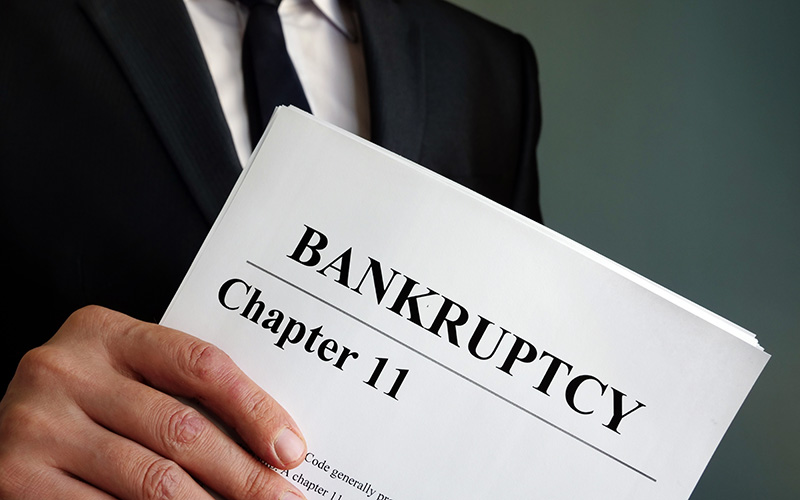
DIP Financing is a term for providing liquidity during the bankruptcy process, incuring postpetition obligations thereunder, and as such those orders may be amended, supplemented, or even modified from time to time as needed.
A Traditional Loan, a Line of Credit, and Factoring are the most common forms of DIP Financing.
The name DIP Financing is short for “Debtor-in-Possession” Financing.
An insolvent businesses is considered to be bankrupt, therefore the debtors should no longer be in possession of the business.
DIP Financing is always put in place through a court order.
The court may allow a business to obtain secured financing under Section 364 subsection (c) of the U.S. Bankruptcy Code, known as “Debtor-in-Possession” Financing.
The court must approve the DIP Financing and provides the lender with a special DIP Finance charge, or security interest, which ranks ahead of all other lenders.
(DIP) Debtor-in-Possession Financing is a specialized form of financing granted to a business that is undergoing a Chapter 11 Bankruptcy.
The purpose of DIP Financing is to inject liquidity into a financially distressed business, enabling the business to continue its daily operations and maintain its monthly payroll.
DIP are usually structured as interim revolving credit facilities.
This form of financing allows for a business to continue its daily operations while making necessary adjustments, as the business is emerging from a bankruptcy financially stable.
A DIP Loan becomes accessible to the Post-Petition Debtor upon filing for Chapter 11 Bankruptcy.
DIP Financing has top priority over claims against the debtor and its collateral.
The DIP Financing displaces all other lenders and creditors, the DIP lender gets an administrative priority claim on a debtor’s assets.
DIP Financing is usually secured by all of the business’ assets.
DIP Financing is governed by chapter 11 of Title 11 of the United States Code (the “Bankruptcy Code”). Specifically, section 364 of the Bankruptcy Code which authorizes DIP Financing arrangements by allowing the “debtor” to obtain post-petition (Post-Bankruptcy Filing).
Credit A (DIP) Debtor-in-Possession is a business or individual that has filed for Chapter 11 Bankruptcy protection while still holding property to which creditors have a legal claim under a lien or other security interest.
A business having a DIP may still continue to do business using such assets, all though the business is required to seek court approval for any of its actions that fall outside the scope of its regular business activities.
A business having a DIP always keeps precise financial records, insures any property, and files all appropriate tax returns.
Exit Financing is used to make the required payments under a Chapter 11 Bankruptcy which can include the payoff of a (DIP) Debtor-in-Possession Loan.
Debtor-in-Possession Financing refers to debt incurred while a business is in bankruptcy, and Exit Financing is debt incurred upon emerging from reorganization. Exit Financing is the process whereby a debtor obtains enough financial support to successfully emerge from bankruptcy.
DIP Amount means the total amount of unpaid Liabilities of the Debtors under and incurred in accordance with the DIP Loan.
DIP Exit Fee means an exit fee equal to 3.0% of the full principal commitment of the DIP Facility, payable in shares of New Equity in an aggregate amount equal to the DIP Exit Fee.
A Priming Loan is a form of (DIP) Debtor-in-Possession Financing that allows a business within Chapter 11 Bankruptcy proceedings to obtain credit to assist in specific areas of reorganization. The Benefits of DIP Financing:
Quick Approval of Financing/Loans
Fast Funding
Very Efficient Collections
Pre-Petition,Petition, Post,Petition & Exit Financing Is Available When Needed
DIP Financing Steps:
Step I – The Client engages the Bankruptcy Counsel and then files Chapter 11 bankruptcy.
Step II – A DIP Financing plan is presented to the court for approval.
- Step III – The Bankruptcy Counsel proposes an exit plan to include Exit Financing if its needed.
Step IV – The business executes the plan and is back to its daily business operations.
*With this form of financing, a business’ assets are used as the collateral to secure the loan from the lender. For More Information On DIP Financing
Call Us Today! SECA Funding Company
Toll-Free
+1 (800) 413-5167 Ext. 9



